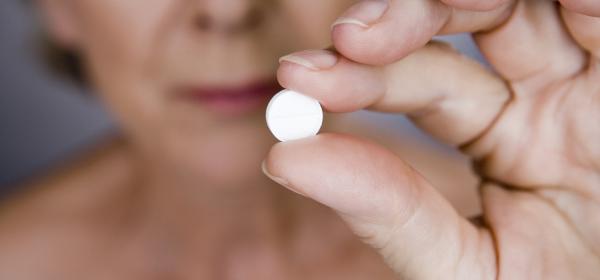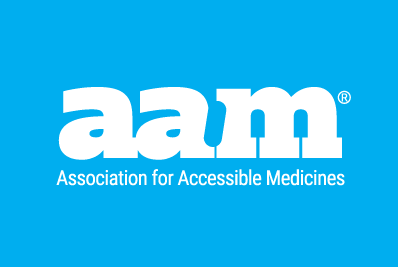This month, the Association for Accessible Medicines and its Biosimilars Council (AAM) issued a report based on research and analysis undertaken by the IQVIA Institute for AAM (“the IQVIA Institute Analysis”) examining the impact of patent settlements on patient savings and access. While these findings reflect that patent settlements are responsible for billions of dollars of healthcare savings and years of market entry prior to patent expiration, they also reflect a fundamental reality: under the relevant legal frameworks, brand companies have enormous leverage in patent litigation. Patent litigation settlements are therefore critically necessary to ensure that generics and biosimilars can get on the market in a timely fashion and without the threat of endless litigation.
Brand companies are increasingly prosecuting and obtaining more patents per medicine in efforts to assemble what are known as “patent thickets.” In the last two decades, the number of patents per medicine have tripled. One well-known example of a patent thicket is for the biologic Humira®. There, AbbVie accumulated approximately 136 patents that far extended AbbVie’s exclusivity period beyond its 2004 approval date. Even worse, external, peer-reviewed research has found that the Humira® patent estate is comprised of 80% duplicative patents. And this is not merely a Humira® problem: numerous other large brand-name pharmaceutical companies are purportedly following this exact same strategy. Indeed, Amgen has maintained approximately 30 years of exclusivity for the biologic Enbrel® due to duplicative patents. This is not merely the problem for biologics—numerous small molecules are protected by masses of patents, including Auvelity® with at least 122 patents.
These masses of duplicative patents create a numbers game and massive leverage for brand companies in patent litigation. Challenging a large patent estate requires generic and biosimilar manufacturers to engage in years of slow-moving and costly litigation, yet the process of obtaining patents is comparatively quite inexpensive. For example, although a “duplicative patent[] may cost as little as $25,000 to obtain,” challengers will pay, on average, “$774,000 to challenge that patent” in administrative proceedings and “even more” to bring a similar challenge in district court. Given these mounting costs, uncertainties, and long litigation timelines, the sheer number of patents, oftentimes “directed to obvious variants of an invention” render legal challenges “prohibitively expensive.”
The incentive to litigate these cases is further reduced by the fact that, even after a successful challenge to “one or [] several of these patents,” a generic manufacturer “do[es] not necessarily enter the market . . . [and] may simply face more patent roadblocks.” This is directly borne out in a separate problem known as “serial patent litigation.” “Serial patent litigation” is the brand practice of filing multiple successive actions against a generic or biosimilar company on the same product based on later-issued, held-back, and/or newly-acquired patents This tactic gives brand pharmaceutical companies multiple opportunities to block their competition while driving up litigation costs for the generic or biosimilar manufacturer and extending its period of litigation risk and uncertainty. Generic and biosimilar companies must essentially, in baseball terms, “bat one thousand” against all brand patent claims to prevail and launch their lower-cost product. If generic and biosimilar companies lose on a single claim, they are either off the market or subject to potentially crippling damages verdicts. Thus, the combination of patent thickets and serial patent litigation enormously tips the scales in brand companies’ favor.
Because of this substantial leverage, the reality that generic and biosimilar manufacturers typically face is that patent settlements become the only option to pro-competitively launch a generic or biosimilar and expedite patient access to lower-cost medicines while derisking the exposure to serial patent litigation and cutting through patent thickets. The perfect example to illustrate this is Humira®, where biosimilar manufacturers were able to expedite their launches to 2023—11 years prior to brand patent expiration—due to patent settlements. Without settlements, biosimilar manufacturers simply could not have navigated the 136-patent estate owned by AbbVie and “batted one thousand.” Numerous similar examples exist for other biologics—biosimilar versions of Stelara® have entered the market this year due to patent settlements. In the small molecule context, a company seeking approval to market a generic version of Exparel® faced six waves of patent litigation involving patents scheduled to expire between 2041-2044. That filer entered into a patent settlement enabling its entry into the market 14 years prior to the last-expiring asserted patent, and derisking further serial litigation by the branded manufacturer.
Congress is currently considering legislation, S. 1096, that would significantly restrict patent settlements and render them presumptively anticompetitive. This would serve to only worsen the brand leverage issue even further by limiting the terms that generics and biosimilars can obtain in patent settlements. It would leave generic and biosimilar companies with the daunting prospect of attempting to invalidate or design around 100+ patents asserted at different times. No one benefits from that, most certainly not patients. Congress should preserve the ability to expedite access to lower-cost medicines, particularly given the well-documented benefits of patent settlements. Doing otherwise would simply exacerbate an otherwise precarious situation for manufacturers, patients, and taxpayers.
References
1 Humira Patent Fortress at Center Stage During Pharma Execs’ D.C. Showdown, Crains Chicago Business (Feb. 26, 2019), https://www.chicagobusiness.com/health-care/humira-patent-fortress-center-stage-during-pharma-execs-dc-showdown.
2 Rachel Goode & Bernard Chao, Biological Patent Thickets and Delayed Access to Biosimilars, an American Problem, 9 J.L. & Biosciences, 19 (Sept. 2022).
3 Robbins, supra note 11; see also Dulan Lokuwithana, Merck Leans on New Keytruda Formulation to Avoid Patent Cliff, Seeking Alpha (Dec. 2, 2022), https://seekingalpha.com/news/3913649-merck-leans-on-new-keytruda-formulation-to-avoid-patent-cliff.
4 Stanton Mehr, Thirty Years of Exclusivity for Enbrel? It’s Time for Some Common Sense, available at https://biosimilarsrr.com/2019/08/13/thirty-years-of-exclusivity-for-enbrel-its-time-for-some-common-sense/
5 Goode & Chao, supra note 2, at 19.
6 87 Fed. Reg. at 60131.
7 Goode & Chao, supra note 2, at 3.
8 Formycon/Fresenius Kabi and Samsung Bioepis Settlements with J&J and Janssen Biotech regarding Ustekinumab, available at https://www.bigmoleculewatch.com/2023/08/16/formycon-fresenius-kabi-and-samsung-bioepis-settlements-with-jj-and-janssen-biotech-regarding-ustekinumab/

